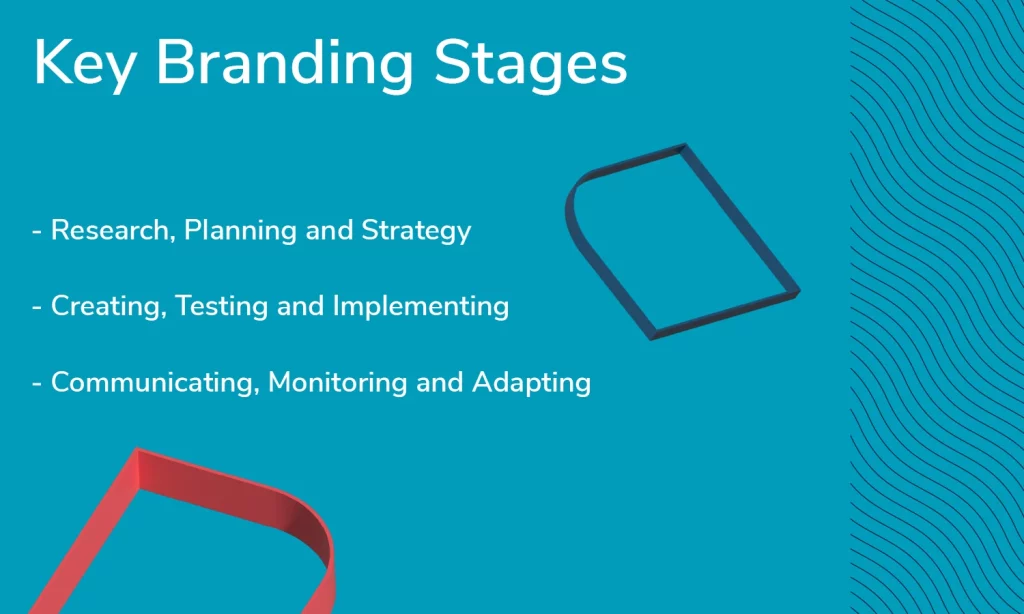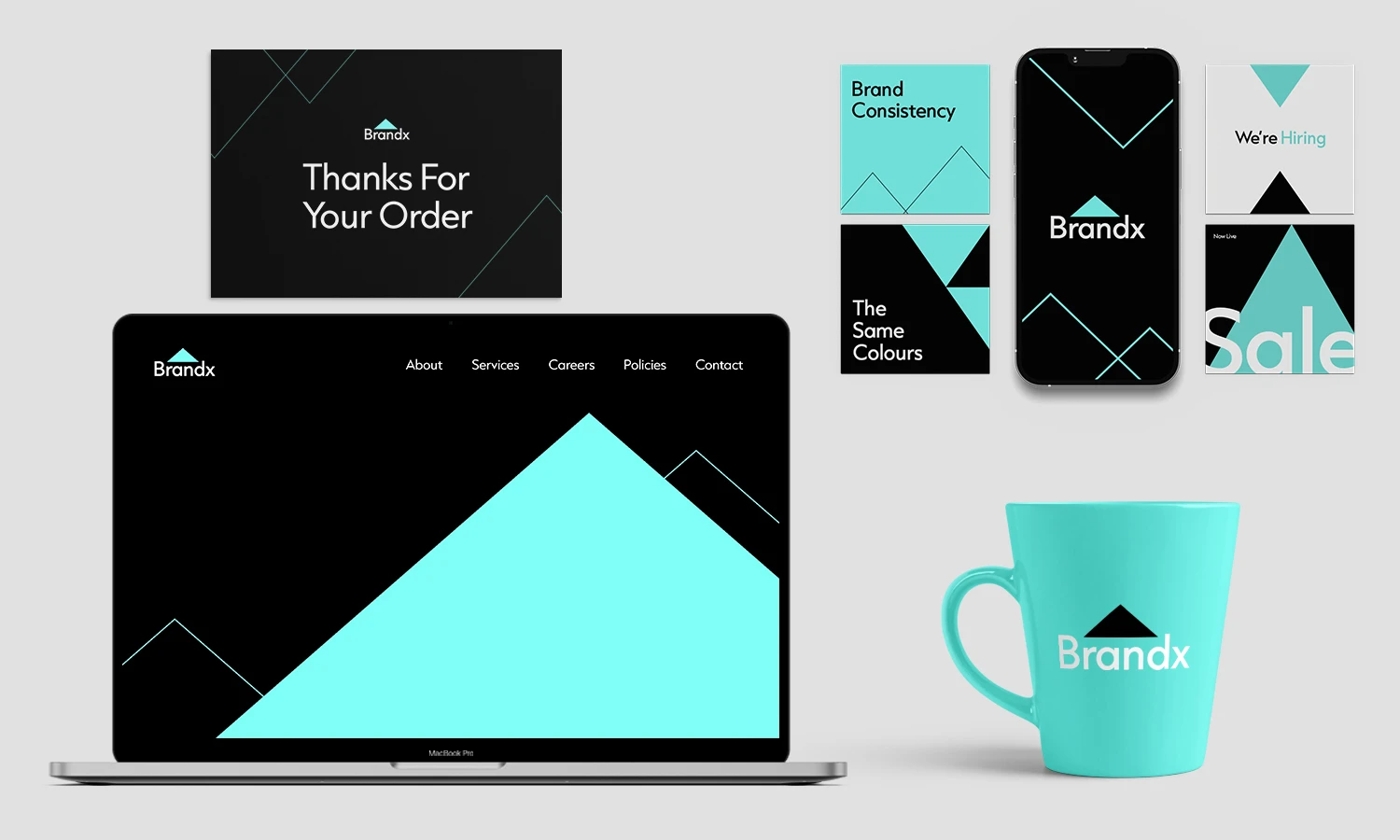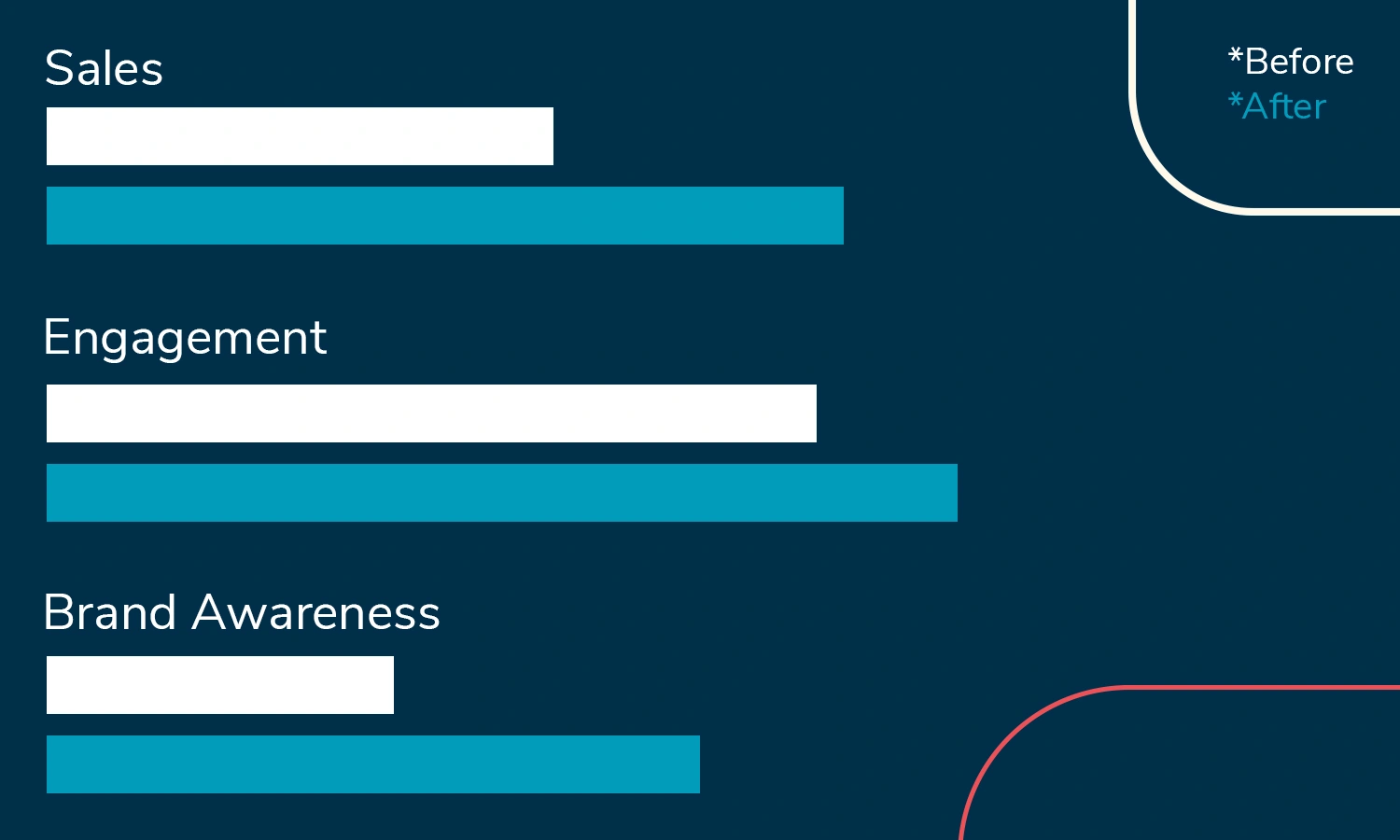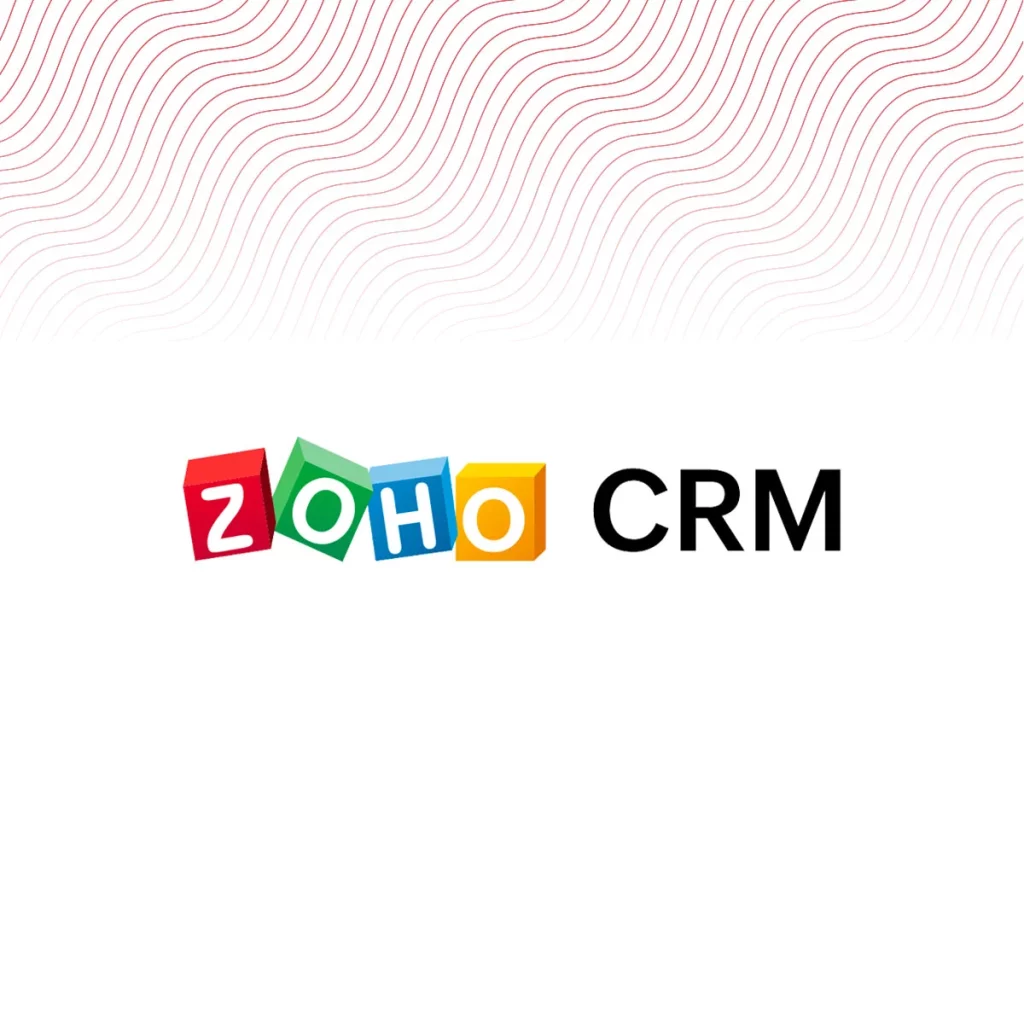Branding is one of the most important aspects of any business. It is what sets your company apart from the competition and tells customers who you are, what you stand for, and what they can expect from your products or services.
Creating a strong brand is essential to success in today’s competitive marketplace. But what exactly is branding? And how do you create a strong brand that will appeal to customers and help your business grow?
This comprehensive guide will answer those questions and more, providing everything you need to know about branding and how to create a successful brand for your business.
What Is Branding?
Branding is the process of creating a name, symbol, or other mark that represents a company or product and differentiates it from other companies or products in the market. A strong brand helps customers to identify a company’s products or services, and it can also inspire loyalty and provide a competitive advantage.
There are many elements that contribute to a strong brand, including the name, logo, tagline, colours, and design of the company and or product. But branding is more than just these physical aspects – it also includes the emotional connection that customers feel with a company or product.
A company’s brand is built over time through customer interactions, advertising, public relations, and other marketing efforts. And once established, a strong brand can be an extremely valuable asset for a business.
History of Branding
The history of branding is a long and fascinating one. It dates back to ancient times, when people first began to use symbols and markings to identify themselves and their belongings. Over the centuries, branding has evolved and changed to meet the needs of businesses and consumers. Today, branding is an essential part of any business, and it’s more important than ever before.
Earliest Examples of Branding
The earliest examples of branding can be found in ancient times. People would often mark their belongings with symbols or other markings to indicate ownership. This was especially common among farmers and herders, who would brand their animals with a hot iron. This practice eventually spread to other industries, such as pottery and metalwork.
Branding During Mediaeval Times
As commerce began to grow in mediaeval times, branding became more sophisticated. Merchants would often use distinctive logos and insignia to help with the identification of their businesses. This helped customers to remember and recognize their favourite brands.

Branding During the Industrial Revolution
During the Industrial Revolution, branding became even more important. With mass production came mass marketing, and businesses needed a way to stand out from the competition. They began to use advertising, packaging, and other marketing techniques to promote their products.
Branding Today
Today, branding is essential for any business that wants to succeed. In a global market, it’s more important than ever to have a strong and recognisable brand identity. Branding can help you attract new customers, build loyalty among your existing customers, and differentiate your products from your competitors.
Why Is Branding Important?
Branding is important for businesses of all sizes, in all industries. A strong brand can help a business to:
- Differentiate itself from the competition
- Attract and retain customers
- Build customer loyalty
- Increase customer lifetime value
- Command a premium price for its products or services
Branding Terms You Should Know
- Brand identity: The physical and emotional attributes of a brand that are used to create customer loyalty.
- Brand equity: The value that customers assign to a brand based on their perceptions and experiences.
- Brand strategy: A plan for how a brand will be positioned in the market and how it will be promoted to customers.
- Positioning statement: A brief summary of what makes a brand unique, how it meets the needs of its target audience, and what sets it apart from its competitors.
- Visual identity: The logo, colours, and other design elements that are used to create a cohesive look and feel for a brand.
- Brand guidelines: A set of rules that govern how a brand should be used in marketing materials.
- Rebranding: The process of changing the way a brand is positioned or promoted in the market. This can be done to refresh a brand or to address changes in the market.
- Brand Preference: The tendency for customers to choose one brand over another.
- Brand Loyalty: The tendency for customers to continue purchasing a particular brand over time.
- Brand Recognition: The ability of customers to identify a particular brand.
- Brand Awareness: The extent to which customers are familiar with a particular brand.
- Brand Map: A graphical representation of how a brand is positioned in the market.
- Brand Audit: A comprehensive review of a brand, including its history, positioning, identity, and equity.
- Brand Extensions: The use of a brand name to launch new products or services.
- Brand Licensing: The process of allowing another company to use a brand name in exchange for a fee.
- Brand Dilution: The weakening of a brand’s identity when it is used in too many different ways or in too many different markets.
- Conscious Branding: A approach to branding that focuses on creating a strong emotional connection with customers.
- Sub-branding: The use of a brand name to launch new products or services that are targeting a different market than the original brand.
- Co-branding: The process of combining two or more brands to create a new brand. This can be done to reach a new market or to offer a more complete product offering.
- Private Label Branding: The process of creating a brand for a product that is manufactured by another company. Private label brands are often found in grocery and drug stores.
- Generic Branding: The use of a generic or unbranded product in place of a branded product. Generic products are often cheaper than branded products.
- Multi-brand Strategy: A branding strategy that uses multiple brands to reach different markets. This can be done by creating separate brands for each market, or by using a single brand name with different sub-brands for each market.
- Character-Driven Brand: A brand that uses a fictional character to promote its products or services. The character is often used in advertising and marketing campaigns.
- Brand Identity: The physical appearance of a brand, including its logo, colours, and design elements.
- Brand Personality: The human characteristics that are associated with a brand.
- Brand Positioning: The way a brand is positioned in the market, in terms of its competitive landscape and target audience.
- Brand Promise: The core benefit that a brand promises to deliver to its customers.
- Founder Brand: A brand that is closely associated with its founder.
- Lifestyle Brand: A brand that is closely associated with a particular lifestyle.
- Umbrella Branding: The use of a single brand name for a group of products or services.
- Individual Branding: The use of separate brand names for each product or service in a product line.
- Brand Architecture: The way in which a company’s brands are organised.
- Corporate Branding: The use of a company’s name to promote its products or services.
- Endorser Brand: A brand that is promoted by a celebrity or other influential person.
- Personal Branding: The use of a person’s name to promote their products or services.
- House of Brands: A company that uses multiple brands, each with its own identity.
- Brand Portfolio: A company’s collection of brands.
- Master Brand: A brand that is used to promote a company’s entire product line.
- Emotional Branding: The use of emotions to connect with customers on a deeper level.
- Functional Branding: The use of branding to improve the functionality of a product or service.
- Reverse Branding: The use of a brand to promote a generic product or service.
- Crowdsourced Branding: The use of online platforms to solicit ideas for branding from the general public.
- Do-It-Yourself Branding: The process of creating a brand without the help of a professional.
- Local Branding: The process of creating a brand that is specific to a certain city or region.
- National Branding: The process of creating a brand that can be used nationally.
- Global Branding: The process of creating a brand that can be used internationally.
- Brand Management: The process of overseeing all aspects of a brand, from its strategy to its implementation.
- Brand Trust: The degree to which customers trust a brand.
- Brand Valuation: The process of determining the financial value of a brand.
- Brand Protection: The process of protecting a brand from misuse or infringement.
The Process of Branding
The process of branding can be divided into three distinct phases:
Pre-branding phase
Pre-branding phase is all about research and planning. During this phase, you need to define your target audience, your brand’s USP, and your long-term goals. This is the most important phase of branding because it sets the foundation for all the other phases.
Branding phase
Branding phase is all about creating a visual identity for your brand. This includes developing a logo, choosing colours and fonts, and creating marketing materials. It’s important to make sure that all of your branding elements are consistent with each other.
Post-branding phase
Post-branding phase is all about maintaining your brand’s equity. This includes monitoring your brand’s reputation, managing customer feedback, and continuously improving your branding strategy. The post-branding phase is ongoing and never really ends.

How to Create a Successful Brand
Now that you know what branding is and why it’s important, it’s time to start creating a successful brand for your business. Here are some tips to get you started:
Define Your Brand
Before you can create a successful brand, you need to have a clear understanding of what your brand is and what it represents. Take some time to define your brand, including its values, mission, and target audience
Do Your Research
Once you have a clear understanding of your brand, it’s time to do some research. Find out what your customers want and need, and what they think of your company and its competitors. This will help you to create a brand that resonates with your target audience.
Create a Unique Positioning Statement
Your positioning statement is a brief summary of what makes your brand unique. It should be clear, concise, and memorable, and it should explain how your brand meets the needs of your target audience.
Develop a Visual Identity
Your brand’s visual identity includes elements like your logo, colours, typography, layouts and photography. These elements should be consistent across all of your marketing materials to create a cohesive look and feel for your brand.

Build Your Brand Equity
Brand equity is the value that customers assign to your brand based on their perceptions and experiences. It’s important to build positive brand equity so that customers will have a positive association with your brand and be more likely to purchase your products or services.
There are many ways to build brand equity, including advertising, public relations, customer service, and social media.
Promote Your Brand
Once you have a strong brand, it’s time to start promoting it. Use all of your marketing channels to get the word out about your brand, and make sure that your branding is consistent across all of your materials.
Continuously Improve
Your branding should be an ongoing process, not a one-time effort. As your business grows and changes, so should your branding. Keep your brand relevant and up-to-date by regularly evaluating it and making changes as needed.
Branding and Consumer Behaviour
When it comes to marketing, there is a lot of talk about reaching the “right” target audience. But what does that really mean? And how do you actually go about doing it?
The answer lies in understanding consumer behaviour. Consumer behaviour is the study of how people make decisions about what to buy, why they buy it, and when they buy it. By understanding consumer behaviour, businesses can develop marketing strategies that are more likely to appeal to their target consumers. There are four main types of consumer decision-making:
Rational Decision-Making
This type of decision-making is based on logic and reasoning. Consumers who use this type of decision-making base their purchase decisions on factors like price, quality, and functionality. Emotional Decision-Making
This type of decision-making is based on emotions and feelings. Consumers who use this type of decision-making base their purchase decisions on factors like brand loyalty, personal preference, and social pressure.
Habitual Decision-Making
This type of decision-making is based on habits and routines. Consumers who use this type of decision-making base their purchase decisions on factors like convenience and ease of use.
Mixed Decision-Making
This type of decision-making is a combination of rational and emotional decision-making. Consumers who use this type of decision-making base their purchase decisions on a combination of logic and emotion.
The type of consumer decision-making that a business should focus on depends on the product or service that they are selling. For example, if a business is selling a product that is expensive and/or critical to the consumer’s life, then they should focus on rational decision-making. On the other hand, if a business is selling a product that is not as expensive and/or not as critical to the consumer’s life, then they can focus on emotional decision-making.
Once you understand how consumers make decisions, you can start to develop marketing strategies that are more likely to appeal to them. Here are some examples of marketing strategies that you can use to reach your target audience:
Use emotion in your branding
If you want to appeal to emotional decision-makers, then use marketing tactics that evoke an emotional response. For example, you could tell a story in your marketing materials or use imagery that evokes an emotional reaction.
Use logic in your branding
If you want to appeal to rational decision-makers, then use marketing tactics that are based on logic and reasoning. For example, you could use data and statistics in your marketing materials or focus on the product’s features and benefits.
Use habit in your branding
If you want to appeal to habitual decision-makers, then use marketing tactics that are convenient and easy to use. For example, you could make it easy for consumers to purchase your product online or offer a subscription service.
Use a mix of emotion and logic in your branding
If you want to appeal to mixed decision-makers, then use marketing tactics that are a mix of emotional and logical. For example, you could use both data and statistics in your marketing materials as well as focus on the product’s features and benefits.
To learn more, check our blog: How Brand Preference Drives Consumer Behaviour
Branding and User Experience
Keep your branding consistent across all touchpoints
Your branding should be consistent across your website, social media channels, marketing materials, and so on. This will help create a seamless, unified user experience for your consumers. Use the same logo, colours, and messaging.
Use the same logo, colours, and messaging in all of your marketing materials, including your website, social media channels, and so on. This will help create a sense of cohesion and unity for your brand.

Create a style guide
A style guide is a document that outlines the specific guidelines for your brand’s visuals and messaging. This could include things like your logo usage, colour palette, typography, and voice and tone. Having a style guide will help ensure that your branding is consistent across all touchpoints.
Have a clear brand identity
Your brand should have a clear identity that is reflected in everything you do. This includes your mission, values, and positioning. Your consumers should be able to easily identify your brand and what makes it unique.
Be authentic
It’s important to be authentic in everything you do. Consumers can see through marketing gimmicks and empty promises, so it’s important to be genuine in your approach. Be honest about who you are, what you do, and what you stand for.
To learn more, check our blog: How to Harmonise Your Brand for a Seamless, Unified User Experience
How to Use Your Branding?
Now that you know the basics of branding, it’s time to put it to good use. The first step is to take inventory of your current branding and see where there is room for improvement. Once you have a good understanding of your brand’s strengths and weaknesses, you can start working on a plan to improve your brand’s equity. If you are starting from scratch, or if you are rebranding your business, the process will be similar.
- First, you need to define your brand’s purpose and position in the market.
- Then, you need to create a visual identity for your brand.
- Finally, you need to consistently communicate your brand’s message across all channels.
The most important thing to remember is that branding is a marathon, not a sprint. It takes time and effort to build a strong brand, but it is well worth the investment. Branding is one of the most important factors in determining the success of your business, so don’t take it lightly. With a little hard work, you can create a brand that will stand the test of time.
Managing Your Brand
Brand management is the process of overseeing all aspects of a brand, from its strategy to its implementation. Brand management is a critical part of any business, but it’s especially important for businesses that are trying to build a strong brand. There are many different aspects of brand management, but the most important ones are:
Brand Strategy
The process of defining the direction of a brand. This includes researching the competition, developing a unique selling proposition (USP), and creating a visual identity. Brand Implementation
The process of putting a brand strategy into action. This includes developing marketing materials, choosing the right channels to communicate your message, and monitoring your brand’s progress.
Brand Monitoring
The process of tracking a brand’s performance and making changes to improve it. This includes monitoring your brand’s reputation, managing customer feedback, and continuously improving your branding strategy.
How to Create a Strong Brand Attachment?
Consumers become attached to brands for a variety of reasons. Some consumers are attracted to the history or story behind a brand, while others are drawn to the quality or reputation of the brand. And some consumers simply like the way a certain brand makes them feel.
There are a few key things that businesses can do to create a strong brand attachment with their target consumers:
Create a unique and differentiated brand
Consumers should be able to easily identify your brand and what makes it different from your competitors. Your branding should be consistent across all touchpoints, including your website, social media channels, and marketing materials.
Build a strong reputation
Your brand should be known for its quality, reliability, and customer service. You can build a strong reputation by getting involved in your community, being active on social media, and creating positive customer experiences.

Evoke an emotional response
Your brand should evoke an emotional response from your consumers. This could be anything from feelings of happiness and joy to feelings of trust and loyalty.
Be consistent
It’s important to be consistent with your branding across all touchpoints. This includes using the same logo, colours, and messaging in your marketing materials, website, social media channels, and so on.
Have a clear mission and values
Your brand should have a clear mission and set of values that guide everything you do. Your consumers should be able to easily understand your mission and values and how they align with their own.
To learn more, check your blog: How to Create a Strong Brand Attachment for Your Business
How to Keep Your Brand Relevant in a Changing Market
Understand your audience
It’s important to understand your target audience and what they want and need from your brand. Keep your finger on the pulse of your industry and be aware of any changes or shifts in your target market.
Be agile
In order to keep up with a changing market, you need to be agile and adaptable. This means being willing to change your strategies, tactics, and even your brand identity if necessary.
Innovate
It’s important to innovate and stay ahead of the curve. This could mean anything from developing new products and services to adopting new technologies and marketing methods.
Evolve
As your business grows and evolves, so too should your brand. Make sure your brand identity evolves along with your business, so that it always accurately reflects who you are and what you do.
Stay true to your values
In a changing market, it’s important to stay true to your core values. This will help you maintain a consistent brand identity that your consumers can trust and rely on.
Branding Mistakes to Avoid
Not having a clear brand identity
One of the biggest branding mistakes you can make is not having a clear brand identity. It’s important to know who you are as a brand, and to communicate that clearly to your target audience.
Trying to be everything to everyone
Another mistake is trying to be everything to everyone. It’s important to focus on your target market and what they want and need from your brand.
Not staying true to your values
In a changing market, it’s important to stay true to your core values. This will help you maintain a consistent brand identity that your consumers can trust and rely on.
Being afraid to change
Change is a necessary part of business, and your brand should change along with your business. Be willing to adapt your brand identity as your business grows and evolves.
Not measuring your success
It’s important to measure the success of your branding efforts so that you can see what’s working and what isn’t.
To learn more, check our blog: 10 Common Branding Mistakes by Manufacturers
Measuring the Success of Your Branding Efforts

Sales
One of the most obvious ways to measure the success of your branding efforts is through sales. If you’ve seen an increase in sales, it’s likely that your branding is working well.
Engagement
Another way to measure the success of your branding is through engagement. This could include things like website traffic, social media engagement, and email open rates. If you’re seeing an increase in engagement, it’s a good sign that your branding is resonating with your target audience.
Brand awareness
Another way to measure the success of your branding is through brand awareness. This refers to how familiar and recognizable your brand is. You can measure brand awareness through surveys and consumer research. If you’re seeing an increase in brand awareness, it means that your branding efforts are working
The Future of Branding
Increased Personalisation
In a global market, businesses are increasingly turning to personalization as a way to stand out from the competition. This trend is likely to continue, as businesses strive to create a more personalised experience for their customers.
Greater Use of Technology
Technology is changing the way we interact with brands. Brands are using more and more technology to reach their target audiences. This trend is likely to continue, as technology becomes more and more ubiquitous in our lives.
Social Media
Social media is playing an increasingly important role in branding. It’s a powerful tool for building relationships with customers and promoting your brand. This trend is likely to continue, as social media becomes more prevalent in our lives.
Sustainable and Ethical
Consumers are increasingly interested in sustainable and ethical brands. This trend is likely to continue, as people become more aware of the impact of their consumption on the environment and on society.
Experiential Marketing
Experiential marketing is a powerful way to connect with consumers on an emotional level. This trend is likely to continue, as businesses strive to create memorable experiences for their customers.










